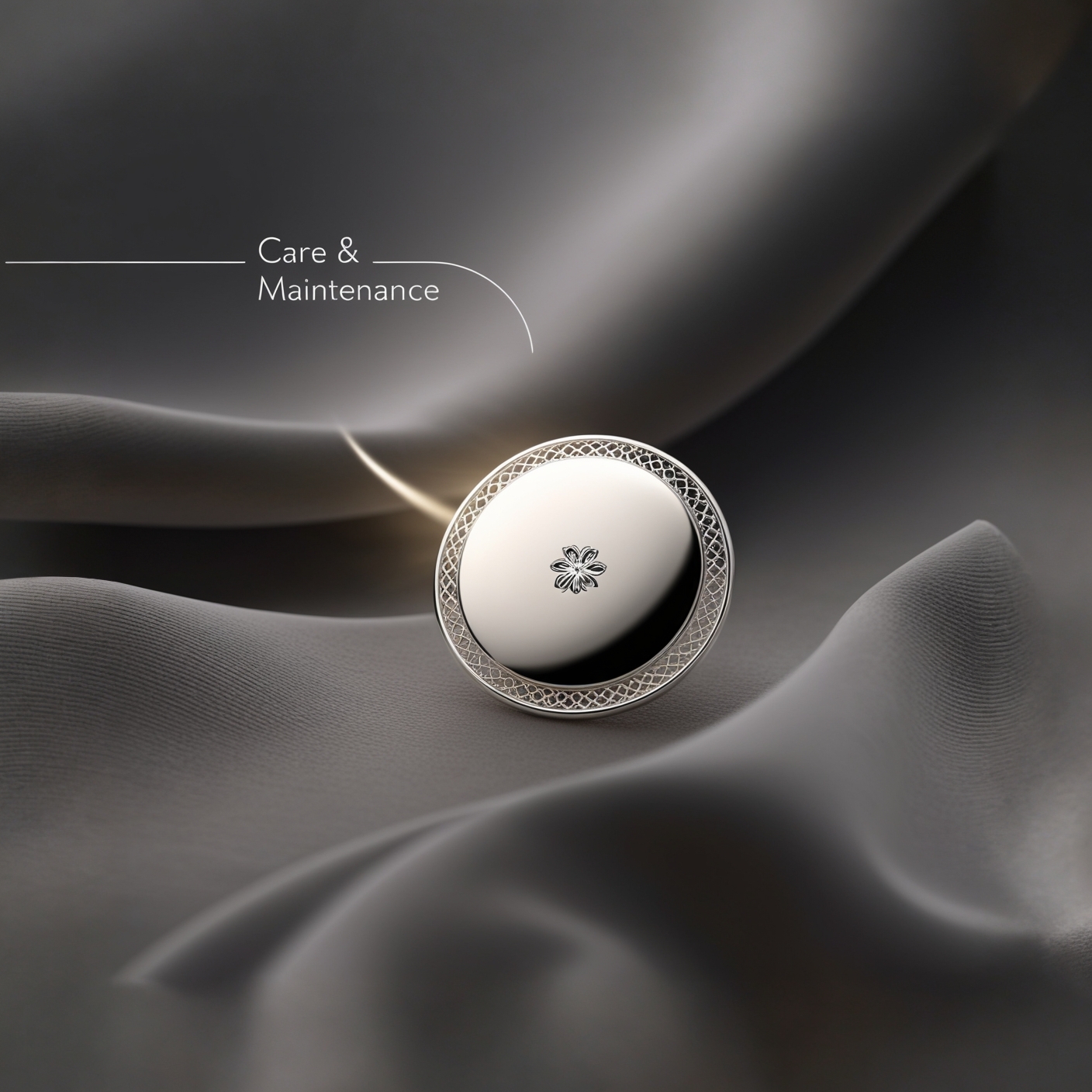Custom lapel pins are not only cherished collectibles but also symbols of personal achievements, group affiliations, and memorable events. Whether you’ve acquired pins to celebrate milestones, as corporate gifts, or for your growing collection, keeping them in pristine condition is essential to preserving their value, appeal, and sentimental significance. Just like any other collectible or accessory, custom lapel pins require proper care and attention to ensure they maintain their shine, integrity, and beauty over time.
While lapel pins are designed to be durable, they are still susceptible to wear and tear, tarnishing, and potential damage from improper storage or handling. Whether you’re a seasoned pin collector or just getting started, it’s important to establish a care and maintenance routine that protects your pins from the elements and ensures they remain in excellent condition for years to come.
In this article, we’ll explore nine best practices for custom lapel pin care and maintenance. These tips will help you preserve the quality, color, and finish of your pins, keeping them looking as good as new and ensuring that they maintain their value as part of your collection.
1. Proper Handling of Custom Lapel Pins
The first and perhaps most crucial aspect of custom lapel pin care is handling. Pins are delicate, especially when they feature intricate designs, enamel fills, or special finishes. Handling your pins improperly can result in scratches, dents, or tarnishing.
1.1. Always Handle Pins with Clean Hands
Before touching your custom lapel pins, ensure that your hands are clean and dry. The oils, dirt, and residue from your fingers can easily transfer onto the surface of the pin, dulling its finish or causing long-term damage. If you’ve recently applied lotion or have any kind of moisture on your hands, it’s a good idea to wash them first.
- Pro Tip: For especially valuable or fragile pins, consider using cotton gloves to handle them. This added layer of protection ensures that your fingerprints or oils don’t come into contact with the pin’s surface.
1.2. Handle Pins by the Edges
Whenever possible, avoid touching the enamel, paint, or plating on the pin’s face. Instead, handle the pin by its edges or the backing. This reduces the risk of accidentally scratching or wearing down the front design or finish. Additionally, touching the front of the pin can cause smudges, which can build up over time, reducing the pin’s overall visual appeal.
2. Cleaning Your Custom Lapel Pins
Over time, dust, dirt, and other particles can accumulate on your custom lapel pins, dulling their appearance. Regular cleaning will help maintain the shine and quality of your pins, keeping them looking fresh and vibrant.
2.1. Use a Soft Cloth for Regular Wiping
For routine cleaning, a soft, lint-free microfiber cloth is ideal for gently wiping the surface of your custom lapel pin. This will remove any dust or fingerprints that have accumulated without scratching the metal or enamel. Regular wiping can help maintain the pin’s sheen and prevent the buildup of grime.
- Pro Tip: Avoid using rough or abrasive cloths, as they can cause fine scratches on the enamel or metal plating.
2.2. Gentle Soap and Water for Deep Cleaning
If your pin has accumulated more stubborn dirt or residue, a gentle cleaning solution can help. Mix a small amount of mild soap with warm water, and use a soft-bristled toothbrush or cotton swab to clean the pin. Be sure to focus on crevices where dirt can get trapped, such as around raised metal edges or intricate design elements.
- Pro Tip: Rinse the pin thoroughly with clean water after washing, and dry it immediately with a soft cloth to prevent water spots or tarnishing. Avoid submerging the entire pin in water, especially if it has delicate enamel work or glued elements.
3. Preventing Tarnish on Metal Custom Lapel Pins
One of the biggest threats to the longevity of metal custom lapel pins is tarnishing. Over time, exposure to air and moisture can cause the metal components of your pin to oxidize, leading to discoloration or tarnishing. This is especially common with pins made from silver, brass, or other reactive metals.
3.1. Store Pins in a Cool, Dry Environment
To prevent tarnishing, it’s important to store your custom lapel pins in a cool, dry place. Humid environments or direct sunlight can accelerate the tarnishing process, especially if your pins are made from metals that are prone to oxidation.
- Pro Tip: Keep your pins in a storage box or container that is airtight to minimize exposure to moisture. You can also add silica gel packets to your storage area to absorb excess humidity and protect the pins from environmental damage.
3.2. Use Anti-Tarnish Cloths and Bags
For pins made from tarnish-prone metals such as silver, consider storing them in anti-tarnish cloths or bags. These specialized storage materials are designed to prevent tarnish by neutralizing the chemicals in the air that cause oxidation. Wrapping your pins in anti-tarnish cloths can significantly extend their lifespan and keep them looking shiny and new.
- Pro Tip: You can also purchase anti-tarnish strips or papers to place inside your pin storage case for added protection.
4. Storing Your Custom Lapel Pins Properly
Proper storage is essential for protecting your custom lapel pins from damage, whether it’s scratches, tarnish, or bending. A well-organized storage system will not only keep your pins safe but also make it easier to access and display them.
4.1. Use Display Cases for Organization
If you’re an avid pin collector, investing in a display case can be a great way to both store and showcase your custom lapel pins. Display cases protect your pins from dust and damage while allowing you to view and enjoy them without handling them frequently.
- Pro Tip: Choose a display case with a glass or plastic cover to provide protection from dust and environmental elements while keeping your pins visible. Felt-lined cases can also prevent pins from sliding around and getting scratched.
4.2. Individual Pouches or Containers for Fragile Pins
For more delicate or valuable pins, consider storing them individually in soft pouches or containers. This prevents the pins from rubbing against each other and reduces the risk of scratches or dents. If you need to store multiple pins together, make sure they’re separated by a soft barrier, such as a cloth or padding.
- Pro Tip: Avoid storing pins in plastic bags for long periods, as some plastics can trap moisture and cause tarnishing or discoloration.
5. Rotating Pins in Your Collection
If you frequently wear your custom lapel pins or display them as part of an outfit, rotating them regularly can help preserve their condition. Wearing the same pin repeatedly can expose it to more wear and tear, leading to faster degradation.
5.1. Rotate Pins to Minimize Wear
To keep your entire collection looking fresh, rotate the pins you wear or display. This prevents any single pin from being overly exposed to environmental factors, reducing the risk of damage or fading. It also gives you the chance to showcase different pins from your collection and enjoy them all equally.
- Pro Tip: If you have a large collection of custom lapel pins, create a schedule for rotating which pins you wear or display. This will ensure that no pin is neglected and that each gets its time to shine.
5.2. Limit Exposure to Harsh Conditions
Avoid wearing or displaying your pins in harsh conditions such as extreme heat, humidity, or heavy rain. These environmental factors can accelerate wear and tarnish, especially for pins made from delicate metals or adorned with enamel. If you know you’ll be in an environment that could damage your pin, consider leaving it in storage or opting for a more durable one.
- Pro Tip: When wearing a pin on outerwear, such as jackets or backpacks, be mindful of how frequently the pin may be bumped or knocked. Pins that are exposed to frequent jostling are more likely to suffer scratches or damage.
6. Repairing Damaged Custom Lapel Pins
Even with the best care, accidents happen. A pin may get bent, scratched, or lose some of its original luster over time. Knowing how to repair or restore a damaged custom lapel pin can help you salvage its beauty and value.
6.1. Fixing Bent or Warped Pins
If a pin’s metal backing or post becomes bent, it’s important to fix it carefully to avoid causing further damage. Using a pair of small, smooth pliers, you can gently bend the metal back into shape. Be cautious not to apply too much pressure, as this could weaken the metal and cause it to break.
- Pro Tip: For more severe damage, it’s best to consult a professional jeweler or pin manufacturer who specializes in lapel pin repairs.
6.2. Polishing Scratched Metal Surfaces
If the metal surface of your custom lapel pin has become scratched or dulled, a gentle metal polish can help restore its shine. Apply the polish with a soft cloth, using small circular motions to buff the surface. Be careful to avoid the enamel areas, as the polish could damage or dull the colored sections of the pin.
- Pro Tip: Always use a non-abrasive metal polish specifically designed for the type of metal your pin is made from (e.g., silver, gold, or nickel).
7. Protecting the Enamel Finish
For pins with enamel fills, protecting the enamel surface is crucial for maintaining the pin’s aesthetic appeal. Enamel can chip or crack if not handled carefully, so taking steps to safeguard this part of the pin will help preserve its overall beauty.
7.1. Avoid Dropping or Knocking the Pin
Dropping a pin can result in chipped or cracked enamel, especially if the pin lands on a hard surface. Be mindful when handling your custom lapel pins, and always store them securely to prevent accidents.
- Pro Tip: When wearing your pins, avoid placing them in areas where they could be easily bumped or knocked, such as on a backpack strap that gets swung around frequently.
7.2. Use Enamel Protectants
There are special enamel protectants available that create a clear, protective layer over the enamel, shielding it from scratches and wear. Applying a thin layer of this protectant can help preserve the pin’s enamel while keeping it looking glossy and vibrant.
- Pro Tip: If you choose to use an enamel protectant, apply it sparingly and allow it to fully dry before handling the pin.
8. Caring for Special Features on Custom Lapel Pins
Many custom lapel pins feature special elements like rhinestones, glitter, or movable parts. These unique features can enhance the look of a pin but also require extra care to ensure they stay intact.
8.1. Cleaning Pins with Rhinestones or Gems
For pins adorned with rhinestones, gems, or other delicate features, it’s important to clean them with extra care. Avoid using water or cleaning solutions directly on the stones, as this can loosen the adhesive that holds them in place. Instead, use a dry, soft cloth to gently buff the surface and remove any dust or fingerprints.
- Pro Tip: For heavily adorned pins, consider storing them in a padded case to protect the stones or gems from becoming loose or damaged.
8.2. Maintaining Pins with Movable Parts
Some custom lapel pins come with moving elements, such as spinners or sliders. These features can add a fun, interactive element to the pin, but they also require maintenance to prevent them from becoming stuck or jammed. Regularly check the moving parts to ensure they are functioning smoothly, and avoid forcing them if they become stiff.
- Pro Tip: A small drop of lubricant, such as silicone spray or sewing machine oil, can help loosen any stuck parts without damaging the pin.
9. Documenting and Organizing Your Custom Lapel Pin Collection
For collectors, documenting and organizing your custom lapel pin collection is essential for keeping track of your pins and ensuring they’re well cared for.
9.1. Cataloging Your Collection
Create a catalog or inventory of your custom lapel pins, noting key details such as the pin’s origin, date of acquisition, and any special features. This can be done digitally or on paper, and it will help you keep track of your collection as it grows.
- Pro Tip: Take photos of each pin to accompany your catalog entries. This can help you document the condition of the pin and serve as a reference if any restoration work is needed in the future.
9.2. Organizing Pins by Category
Organizing your pins by category—such as theme, color, or event—can make it easier to find specific pins when needed. It also adds a level of organization to your collection, allowing you to rotate and display them in a way that tells a story.
- Pro Tip: Use labeled storage containers or display boards to keep your collection organized and protected from dust and environmental damage.
Preserve the Beauty and Value of Your Custom Lapel Pins
Proper care and maintenance are essential to ensuring that your custom lapel pins stay in excellent condition and continue to shine for years to come. Whether you’re wearing them daily, displaying them proudly, or storing them for safekeeping, taking the time to protect and preserve your pins will maintain their aesthetic appeal and value.
From handling your pins with clean hands and storing them in optimal conditions to cleaning them carefully and protecting special features, following these best practices will help you get the most out of your custom lapel pin collection. Each pin in your collection tells a story—by preserving them properly, you can continue sharing those stories and enjoying their beauty for years to come. If you are interested in some custom lapel pins, feel free to contact us at 1-855-471-6752 or fill out one of our FREE QUOTE FORMS.








